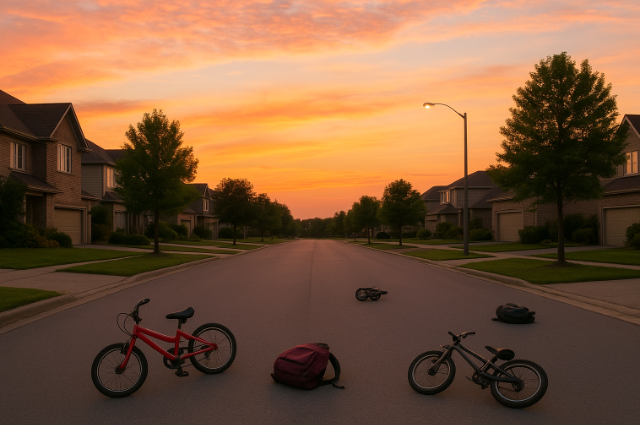
In 2025, Zach Cregger, an American writer-director, released his second horror feature film, Weapons, starring Josh Brolin, Julia Garner, Alden Ehrenreich, Austin Abrams, Cary Christopher, Benedict Wong, and Amy Madigan. The premise of the film is chilling: at 2:17 AM, 17 children from the class of Justine Gandy (played by Julia Garner) mysteriously ran from their homes and never returned. The narrative follows the investigation of this bizarre incident, filled with revelations and unexpected turns that create an eerie sense of fear.
The film belongs to this year’s standout wave of horror cinema—alongside titles like Sinners, Bring Her Back, 28 Years Later, Together, Good Boy, and Final Destinations: Bloodlines. Yet Weapons stands out for its powerful cast performances, especially from the child actors, and its technical excellence in production design, sound, cinematography, and more. Warner Bros.’ production quality has contributed to both its critical and commercial success.
The Defining Shot
One particular shot in the film stands out. Archer Graff (Josh Brolin), while searching for his missing son Mathew, dreams of seeing him run out of their house. As Archer chases, he stumbles upon his home with its door wide open. Above it, suspended in the sky, looms a massive assault rifle glowing with the numbers 2:17.
When asked about the shot, Cregger explained:
“It’s a very important moment for me in this movie. To be frank with you, I think what I love about it so much is that I don’t understand it. I have a few different ideas of what it might be there for, but I don’t have the right answer. I like the idea that everyone is probably going to have their own kind of interaction with that scene—whether they think it’s boring, a political statement, or just cool. It’s not up to me. I just like that it’s there.”
Many critics and theorists, however, have linked the imagery to the epidemic of school shootings in the United States. Cregger has denied these connections, calling the film “not political,” but audiences continue to interpret it otherwise.
Violence, Fear, and American Gun Culture
Weapons goes beyond a missing-children horror narrative—it embodies the fear of losing loved ones to senseless acts of violence. The United States continues to grapple with mass shootings, many involving children. According to CNN, as of July 2025, there have already been 33 school shootings this year.
This raises a pressing question: are we safe? While governments address global concerns, internal crises like gun violence often remain inadequately addressed. The first widely recognized mass school shooting in America dates back to 1966, when Charles Whitman killed 15 people during a rampage at the University of Texas. Since then, incidents like the Virginia Tech shooting in 2007 and many more have deepened the crisis.
Guns are deeply embedded in American society, shaping both politics and identity. Surveys reveal:
Party affiliation: 45% of Republicans own guns versus 20% of Democrats.
Gender: 40% of men own firearms compared to 25% of women.
Community type: 47% of rural residents report gun ownership versus 30% in suburbs and 20% in cities.
Race and ethnicity: 38% of White Americans own guns, compared to 24% of Black, 20% of Hispanic, and 10% of Asian Americans.
While most gun owners (72%) cite self-defense as their reason, the presence of so many weapons poses undeniable risks.
A Film That Sparks Debate
Even if Cregger denies intentional political messaging, Weapons resonates with audiences because it touches a cultural nerve. The fear of violence, the vulnerability of children, and the normalization of gun culture all echo through its imagery.
As a horror film, it succeeds in entertaining and terrifying. As cultural commentary—intended or not—it forces viewers to confront a disturbing reality: that the violence onscreen mirrors real fears in American life.
